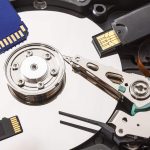
Thanks to scientific and technological progress, it becomes more and more difficult to control Data Recovery Services every year. And it’s not just the development of network technologies. If earlier, in order to be sure of your own safety, it was enough to burn a few letters of spicy content, today, when deleting documents that compromise you from your hard drive or SSD, you cannot be 100% sure that they cannot be restored.
About why this happens and what methods exist for guaranteed destruction of information, we will talk in today’s material.
System utilities for safely deleting files from the HDD :
And we will start with classic hard drives and software methods for data destruction. It’s no secret that when deleting files through a standard manager, the allegedly erased information does not really go anywhere. All that happens in this case is the assignment of the status of free sectors to the corresponding sectors so that they can be overwritten in the future. However, until this happens, files can be easily restored using specialized programs.
The conclusion suggests itself : in order to be sure to delete a particular file, we should initiate its forced overwriting. There are many utilities for these purposes, but the easiest way is to use the standard tools of your operating system.

Windows :
Starting with by default, Microsoft operating systems overwrite the contents of the selected partition with zeros once during its full format. You can also set the number of rewrite cycles yourself, but for this you will have to resort to command line services:
In this example, we are formatting volume D to NTFS, while instructing the operating system to first overwrite the entire Facebook partition with zeros 10 times, using the /p(“passes”) parameter that specifies the number of passes. Unfortunately, Windows does not allow overwriting a specific file or directory.
However, this cannot be considered a serious drawback: if you already store confidential information that may need to be destroyed at some point on a PC, then this should be done at least on a section specially allocated for this, and best of all, on a separate drive , which can be quickly cleared directly from your OS.





